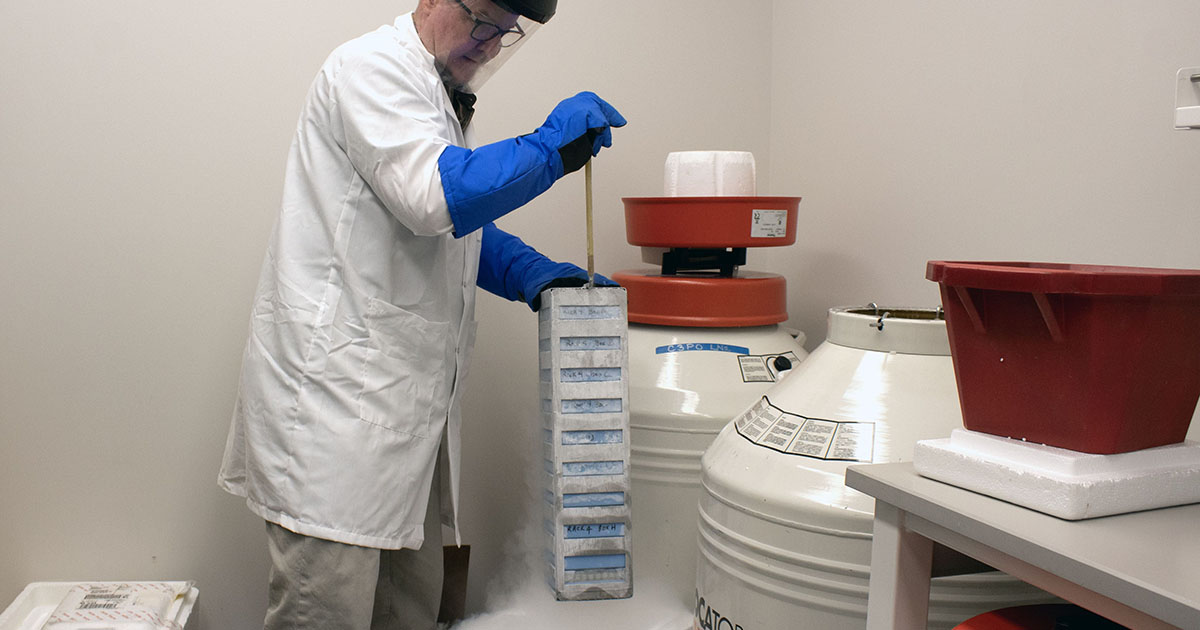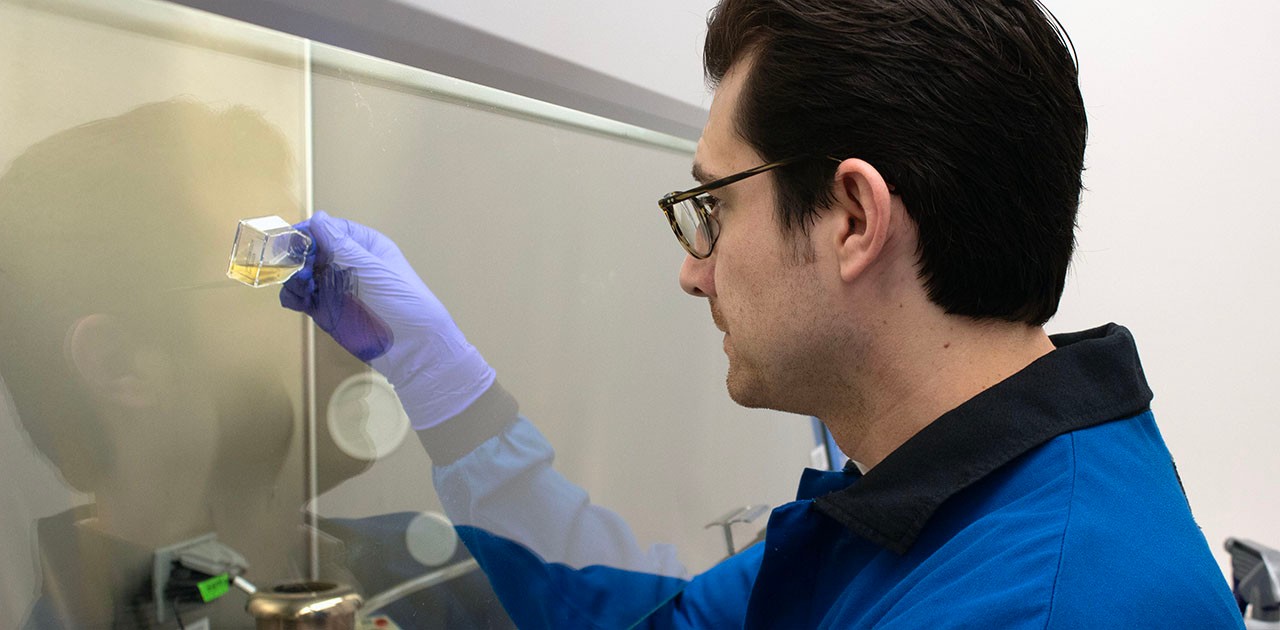
Category: Animal and Food Sciences

Graduate student Joe Patria applies his molecular biology expertise to combat the viral evolution of Marek’s disease
July 09, 2024 Written by Nya Wynn | Photos by Jeremy Wayman
When Joe Patria first came to UD for his Ph.D. in molecular biology, he never thought he would end up doing research involving chickens. But, when he came across Mark Parcells, professor of molecular virology, and his lab, Patria ended up doing just that.
His main interests were molecular and cell biology — how changes within them affect the overall physiology of an entire system.
“Those contributions of everything that goes on down on a molecular level,” said Patria, who was named a Hiram Lasher Fellow. “When I met Prof. Parcells and did a rotation in his lab, I saw how it all came together by studying viruses and pathogens and how they kind of affect those pathways to cause systemic disease.”

As a molecular biology student doing research in CANR, Patria researches the mechanisms behind Marek’s disease virus. For his work in the field, Patria won top research poster at a graduate symposium at the Wistar Institute this past February.
Marek’s disease virus primarily causes cancer in immune cells, which usually results in fatality in chickens. It is highly contagious and transmissive, so it poses a large threat to the poultry industry.
“With Marek’s, you put it into chickens, and if they're not vaccinated, like 95 percent of them will die of cancer within four to six weeks, so it’s an incredibly penetrant virus,” Parcells said. “Every chicken that is exposed to Marek’s in the field, carries that virus for their entire life, just like if you got chickenpox as a kid, you have that virus for your whole life.”
To combat this extremely infectious virus, scientists developed an effective vaccine to protect chickens against it; however, the virus has evolved.
“Over the course of several decades, Marek’s disease virus has shown to break through the protection afforded by those vaccines,” Patria said. “So that is the focus of my work, and studying how the virus actually overcomes the protection from these vaccines.”
As the viruses evolve to evade vaccines, they also evolve with their hosts and learn to target areas that would be most detrimental to the host, such as DNA repair and damage response.
“By studying how viruses evolve, to evade the host immune responses and overcome protection from vaccines, it gives us a better understanding of how we can develop improved vaccines to target those pathways that the viruses have evolved to be dependent on,” Patria said.

Not only can Patria’s work impact the poultry industry, there is also an application to human health. Patria explained that Marek’s disease virus causes cancer of the lymphocytes, which can be compared to Hodgkins and non-Hodgkin's lymphoma, a type of cancer that affects humans.
“There are a lot of parallels between chickens and humans, which you might not expect. On the basis of immunology, we are very similar,” Patria explained. “There’s some parallels there.”
According to Parcells, more than 95 percent of all humans are positive for Epstein Barr virus, another herpes virus like Marek’s disease virus.
“When that goes latent, which it does, a small percentage of people within 20 years develop Hodgkin's lymphoma or another type of cancer associated with that virus,” Parcells said. “It’s not a high frequency, and you can’t really study it in humans.”
This is where our similarities with chickens really come into play.
“Because Marek’s disease virus’ natural host is a chicken, we’re able to study it in its natural reservoir host, which is a unique thing that you can't really do with other viruses,” Patria said. “Especially for viruses that infect humans.”
“It's a way in which you can kind of study these different interactions with the virus in the context of something where it normally causes cancer,” Parcells added. “That may inform how things are working with the development in Hodgkin’s lymphoma.”
Patria continues to work alongside Parcells, other graduate students, and undergraduate students in the Parcells Lab to make more discoveries in the field of molecular biology and with Marek’s disease virus specifically.
In addition to his own development as a researcher, Patria values his opportunities to work with other graduate students and mentor UD undergraduates.
“I hold the worth of science advocacy in high regard,” Patria said. “It was great to see that their contribution to this work has made an impact.”
